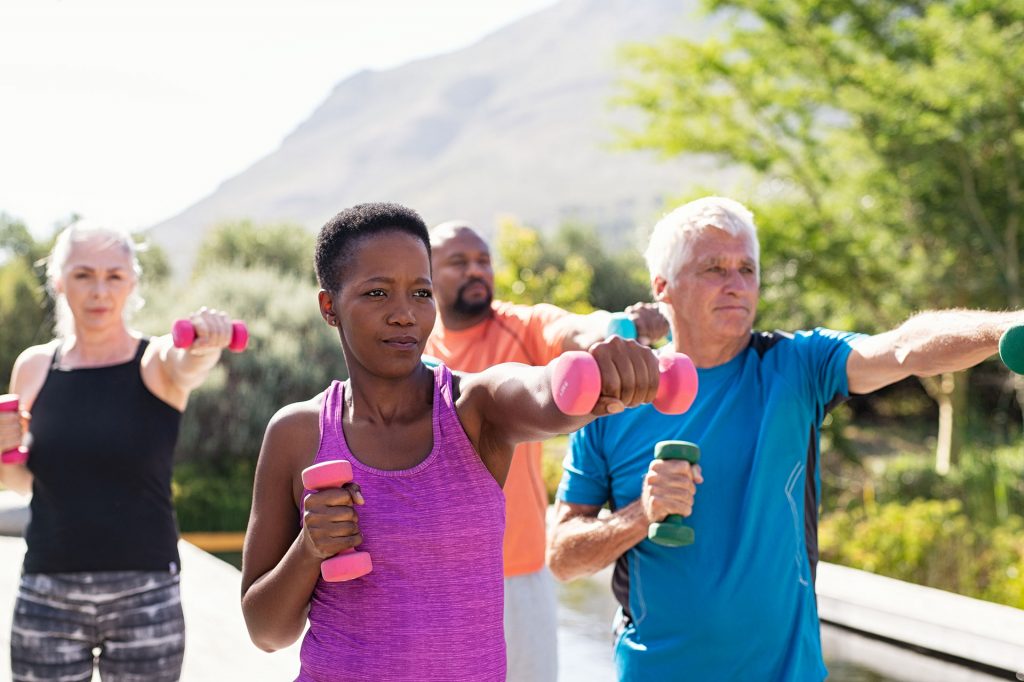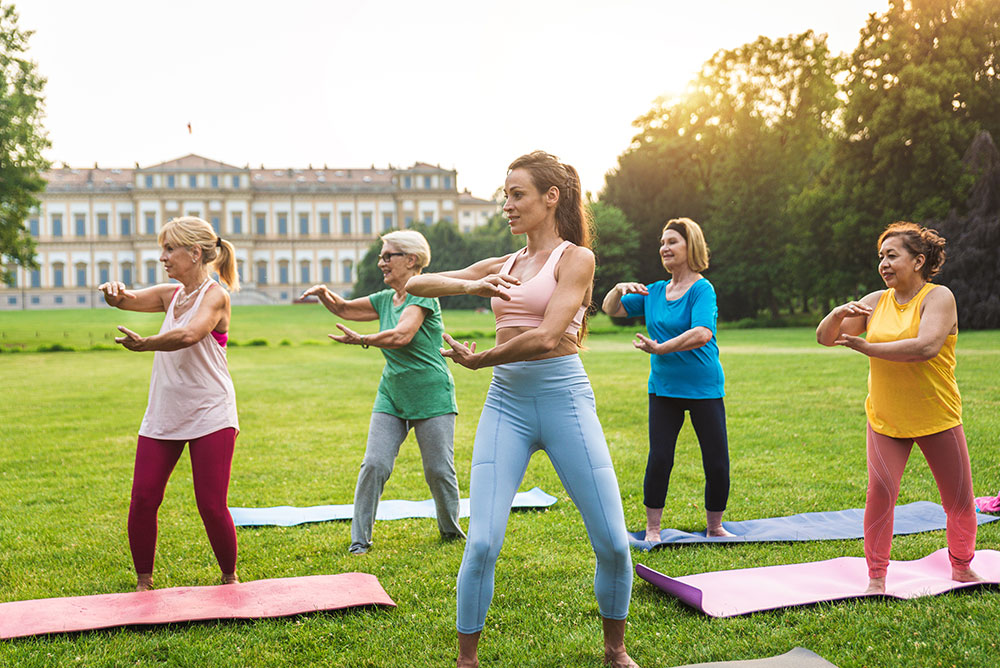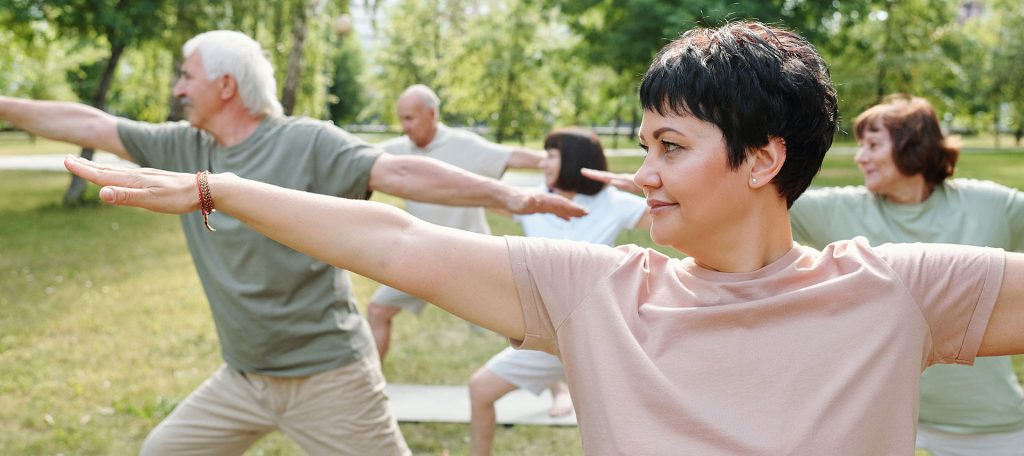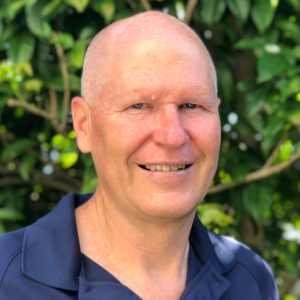DIVERSITY & INCLUSION

8 WAYS
TO SUPPORT THE ACTIVE AGEING POPULATION
Engaging the active ageing population in your fitness business is easier than you think. Ken Baldwin explains.
Many ask the question: “What is the next big thing and how do we create it?” The answer lies in the Active Ageing demographic, which is an area that is increasing by over 34 per cent annually (compared to the average growth of around seven to nine percent of other programs). In a podcast episode with Mel Tempest, Jonathan Freeman, the founder of Club Active, talks of his vision to create a club specifically for those aged over 50. Jonathon started with one club in 2017 on the Gold Coast, and now has 14 clubs Australia-wide with plans to expand overseas.
Here are eight tips to help you engage with this ever-growing population:

- TIP 1.
Create a safe, welcoming and non-intimidating environment where the clients feel at home, relaxed and welcome. When designing an area for the Active Ageing, the key is to have equipment well spaced out and simplistic in its look and ease of use. Use open spaces with minimal mirrors, and ensure that any music playing is likely to be familiar to them, and is done so at an appropriate volume (i.e., not too loud). Offer multi-purpose equipment such as resistance bands, hand weights, steps, kettlebells.
- TIP 2.
Programming is incredibly important! You need to be able to offer programs that don’t just target muscles or use isolation exercises. The Active Ageing want programming for life and longevity, that will assist them in completing everyday life skills more easily. Your programming should also be highly personalised, so it can be adapted to those who don’t have good strength or ranges of motion (for example). Small group training is an absolute must too, as socialisation is one of the biggest reasons they will attend; they want to exercise and chat with friends. For this reason, a coffee machine or meeting area where they can gather together after workouts, is also highly recommended.
- TIP 3.
It’s essential to understand their unique needs. For example, the Active Ageing will not be coming to see you for fitness. Rather, they will come to you to receive the benefits of what fitness can do for them! Not weight loss or strength or getting fit or looking better; for them, it’s all about feeling good, living longer, and having less injuries, more energy, and being able to do the activities they love for life – like keeping up with the grandkids, travelling, hiking, or playing golf without getting sore.
- TIP 4.
Understand the key differences when training the Active Ageing, compared to when working with other demographics. This includes dosage response, order of programming, underlying conditions, coaching versus training, and explaining the reasons why before actioning something. You also need to focus on providing variety and fun, far more than specificity.

- TIP 5.
Focus on the physiological just as much as the physical. There are many underlying issues with the Active Ageing that need to be addressed, even before looking at physical programming. This includes mindset, health history, family history, training history, medications and pre-existing conditions. Create a priority order for what you address first, and the area that will generate the most benefits and results. This can be your starting point, which will lead to improvements in other areas as they progress.
- TIP 6.
Function and movement are the two most important elements of your programming. When these are successfully addressed, they will lead to many more benefits including improvements in strength, balance, confidence and longevity.
These last two tips are the MOST IMPORTANT!
The truth is, we can give them HIIT training, heavy weights and endurance training. We just need to structure things differently and really individualise each program in order to do so.
- TIP 7.
Genuine passion: You really have to love what you do, and genuinely want to make a difference and help those who are quite often ignored. There is quite a misconception when it comes to the Active Ageing demographic. They are traditionally thought of as old and frail; that they can’t do much exercise; or that we should take it easy on them by training them lightly. Magazines, movies and attitudes shape this societal ‘ageisim’ in how we consider the Active Ageing. The truth is, we can give them HIIT training, heavy weights and endurance training. We just need to structure things differently and really individualise each program in order to do so. Share your passion with them and they will return it ten-fold. It’s essential that you show genuine care so you can build relationships, rather than sessions or ‘clients’.
- TIP 8.
Education: You cannot work in this area without becoming educated and learning all you can about the Active Ageing demographic. Treat them as you would a beloved family member, and understand their needs and what you can and cannot do with them. They are regarded as a ‘special population’ so it’s important you know as much as you can to be able to safely help them achieve their goals. You can’t stop the ageing process, but you can prolong it by creating healthy programming that will help them enjoy greater independence, fun and longevity.
If you have the thirst for knowledge and a genuine passion for this special population, then right now is a great time to kickstart your involvement in this readymade market, which is continually growing, and desperately in need of more trainers.

Ken Baldwin
Ken is the Founder of the Healthy Ageing Institute and the Training and Education Manager for Perform Better Australia, which both specialise in providing trainers with up-to-date courses and practical information that will help you excel in working with the Active Ageing Demographic. They also offer business mentorships and marketing advice for those wanting business skills and training to help become an authority in this area.